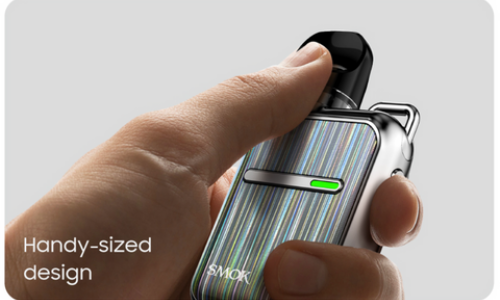
Introduction to Nicotine Pens: Exploring Models and Flavor Options in the E-cigarette Market
Introduction to Nicotine Pens
Nicotine pens, also known as nicotine vape pens or e-cigarettes, have gained significant traction in recent years as an alternative to traditional smoking. These devices provide users with a way to inhale nicotine without many of the harmful byproducts associated with combustible tobacco. This article delves into the features, user experience, comparisons with competing products, advantages and disadvantages, as well as the target demographic for nicotine pens.
Product Features
Nicotine pens typically come in a sleek, portable design, catering to both functionality and aesthetic appeal. Most feature a rechargeable battery system and utilize pre-filled or refillable cartridges that contain a liquid solution of nicotine, flavorings, and other components. These pens often have adjustable settings for airflow and wattage, allowing users to customize their vaping experience. Additionally, many modern nicotine pens are designed with safety features such as short-circuit protection and automatic shut-off, enhancing user peace of mind.
User Experience
Users often report a more satisfying experience with nicotine pens compared to traditional cigarettes. The inhalation process mimics smoking, providing a familiar sensation while allowing for varied flavors such as menthol, fruit, or dessert options. Many users appreciate the lack of unpleasant odors associated with traditional tobacco smoke. The ease of use—primarily due to quick charging and simple cartridge systems—makes nicotine pens accessible for both beginners and seasoned vapers.
Comparison with Competing Products
When pitted against traditional cigarettes and other forms of nicotine delivery, such as cigars and chewing tobacco, nicotine pens stand out for their reduced health risks and diverse flavor profiles. Unlike traditional cigarettes, which release tar and other harmful substances, nicotine pens produce a vapor that contains fewer harmful chemicals. Compared to other vaping devices, such as box mods, nicotine pens are often more compact and user-friendly, appealing to individuals seeking convenience and discretion.

Advantages of Nicotine Pens
The key advantages of nicotine pens include:
1. Reduced Harms: They offer a safer alternative to smoking, with significantly lower levels of harmful substances.
2. Variety of Options: Users can choose from numerous flavors, enhancing the vaping experience.
3. Convenience: Their portable nature allows for easy use on the go, without the lingering smell of tobacco.
4. Cost-Effectiveness: While initial costs may be higher, over time, users may save money compared to purchasing cigarettes regularly.
Disadvantages of Nicotine Pens
Despite their advantages, nicotine pens come with drawbacks, such as:
1. Health Risks: While less harmful than smoking, vaping still poses health risks, including potential addiction to nicotine.
2. Shorter Battery Life: Some models may require frequent recharging, which can be inconvenient for heavy users.
3. Regulations: Increasing scrutiny and regulations on vaping products may limit availability and flavor options in certain areas.
Target User Group Analysis
The target user base for nicotine pens primarily consists of adult smokers looking to quit or reduce their cigarette consumption. Additionally, younger adults who are attracted to the flavor variety and social aspects of vaping are increasingly engaging with these products. Furthermore, individuals transitioning from traditional smoking to less harmful alternatives typically find nicotine pens appealing due to their user-friendly design and customizable features.
Conclusion
In summary, nicotine pens represent a viable alternative for those seeking to reduce their tobacco consumption. With their diverse features, positive user experiences, and convenience, they have established themselves as an increasingly popular choice among smokers and vapers alike. However, potential users should weigh both the benefits and risks involved in their use, tailoring consumption to their personal health goals and preferences.


